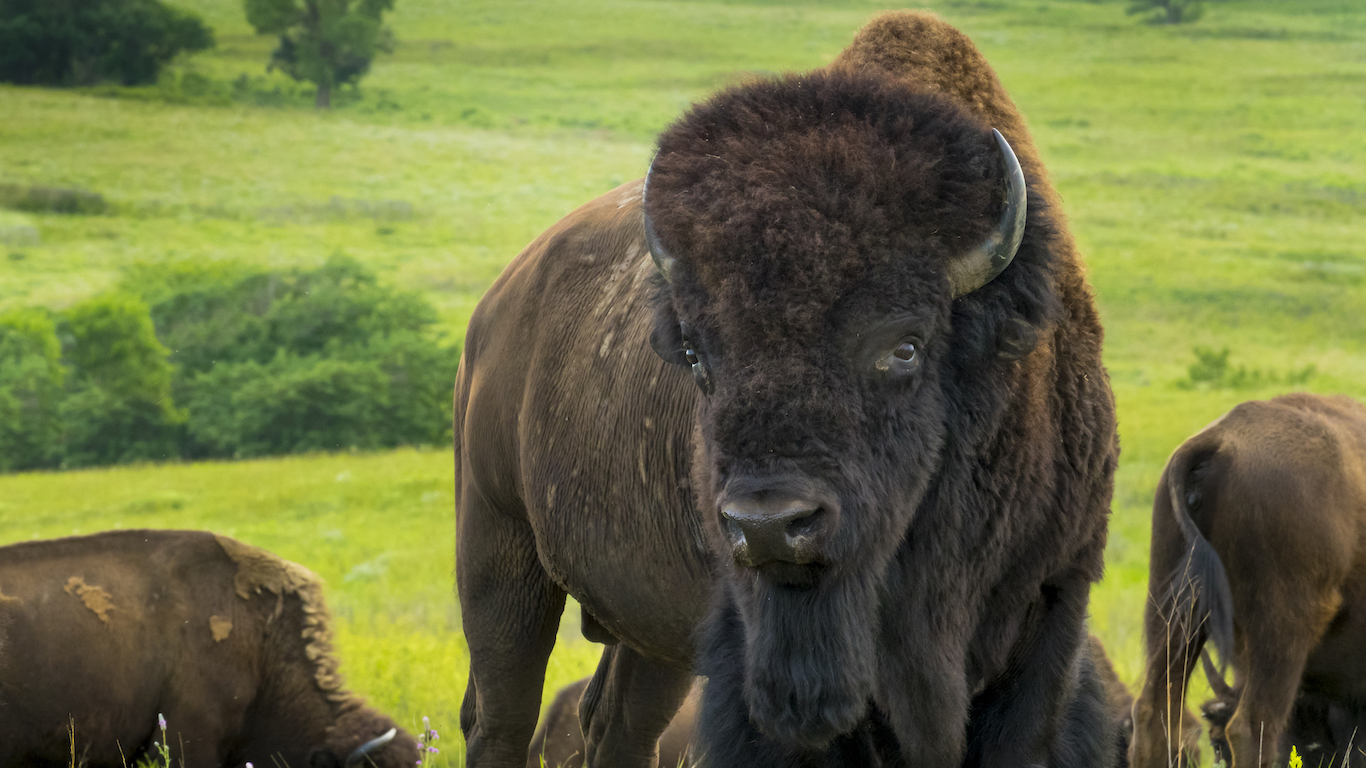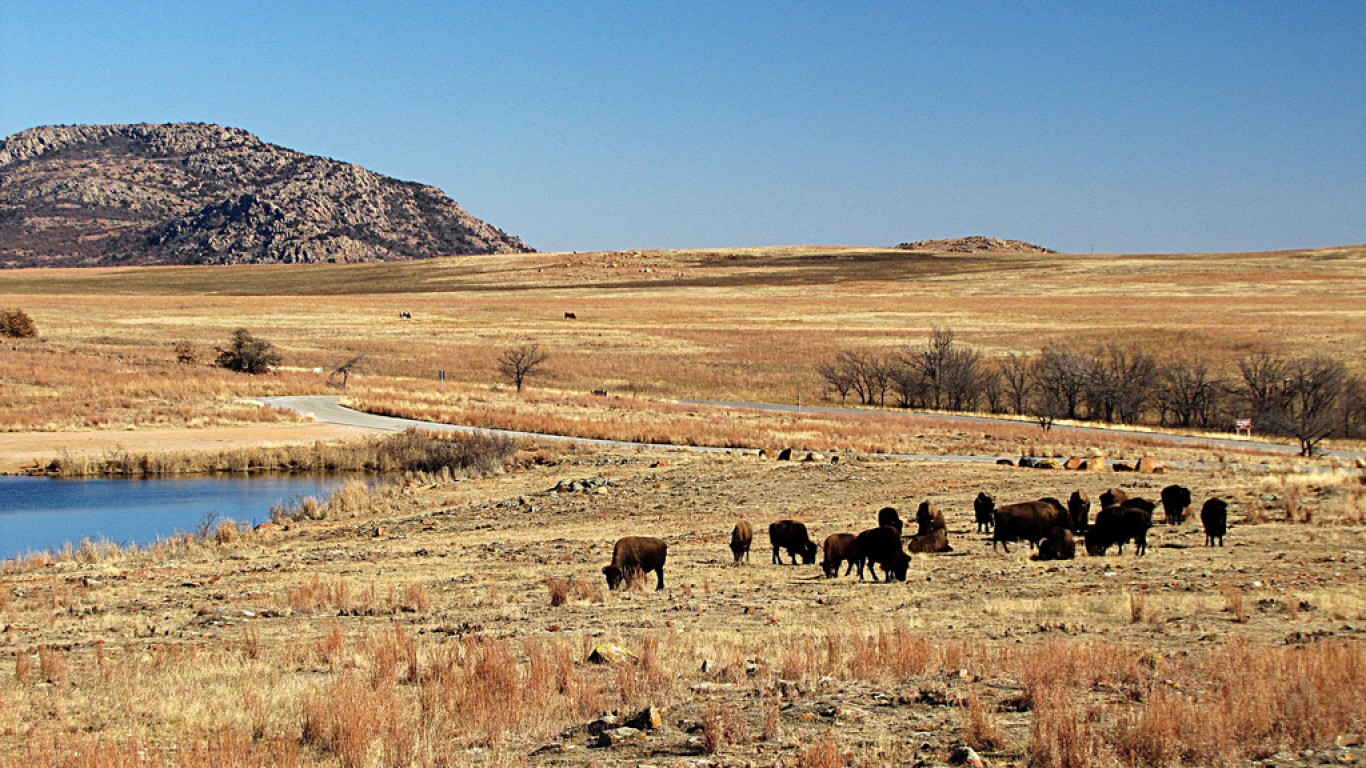Population and Social Characteristics
Native Americans Used All Parts of the Buffalo, and This Is What They Made

Published:

In America, we’ve all heard that Native Americans used (or continue to use) every part of the buffalo, letting nothing go to waste. But how was that done? What was each part used for?
Native Americans believe the buffalo gave itself willingly to the people to be used to continue the cycle of life, so it was treated with the utmost respect. This, and because every part was so useful for their way of life, native Americans held the animal in extreme esteem and treated it with the utmost respect.
Native Americans have hunted the buffalo since prehistoric times, and before the introduction of the horse to North America, they hunted the massive animal on foot.

Naturally, the most important part of the buffalo, the meat, was used to keep the family or tribe alive. There is far too much meat on a buffalo for anyone to eat before it goes bad, so leftover food is preserved to be carried to the next place. However, other parts of the animal were also eaten. These included the kidneys, heart, liver, bone marrow, intestines, and the tongue.

The skin of the buffalo was used to create rawhide, tanned hides, and other materials. The cleaned hides were used for clothing, tipi covers, strings, shoes, blankets, robes, bags, decorations, and hundreds of other things.
The brains of the buffalo were used to preserve the hide of the buffalo if it wasn’t going to be used immediately.

All the bones were used for different purposes based on their shape, strength, and symbolism. For example, large bones like shoulder blades and leg bones would be used for tools like hoes, and scrapers used in the preparation of rawhide, weapons, and more. Broken bones would be sanded down smaller to make awls and needles. Buffalo horns were used for ladles, cups, and eventually powder horns when guns were introduced to America.
Buffalo teeth bones and toe bones were used for games played by both adults and children and bone meal is a wonderful fertilizer for plants.
The skull of the buffalo held special spiritual significance and would often be given a place of honor in a gathering area or in a tipi. Other bones were used for personal decoration and clothing, or in religious ceremonies.

Buffalo stomachs were used to create the tipi cover and could be used to boil water. The cleaned stomach was placed in the bottom of a pit and held in place with stakes. Water was then poured into the stomach and rocks from a fire were placed in the water. Eventually, the water would boil and the stomach would keep it clean.
When not used for boiling water, the stomach was used as a cup, pot, or bucket.

Buffalo tails were used as fly swatters (which makes sense since that’s what they were used for when the buffalo was still alive), and the buffalo sinew was used as a string or cord to help tie things together. The hair of the buffalo was also used to make ropes or as decoration.
The fat of the buffalo was used as cooking oil or to make soap. And, while not generally harvested from the body of the buffalo itself, its excrement makes a fantastic fuel for fires.
Whatever the tribe couldn’t use immediately would be preserved to trade with other tribes or colonizers.
Anything else that was left over, like hooves, was rendered down and used to make glue for various uses. Contrary to popular belief, buffaloes are not used to make buffalo wings.
Credit card companies are pulling out all the stops, with the issuers are offering insane travel rewards and perks.
We’re talking huge sign-up bonuses, points on every purchase, and benefits like lounge access, travel credits, and free hotel nights. For travelers, these rewards can add up to thousands of dollars in flights, upgrades, and luxury experiences every year.
It’s like getting paid to travel — and it’s available to qualified borrowers who know where to look.
We’ve rounded up some of the best travel credit cards on the market. Click here to see the list. Don’t miss these offers — they won’t be this good forever.
Thank you for reading! Have some feedback for us?
Contact the 24/7 Wall St. editorial team.